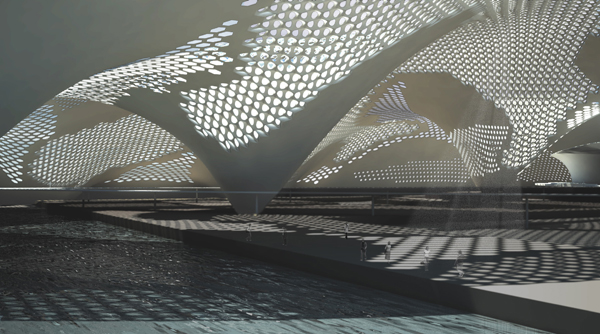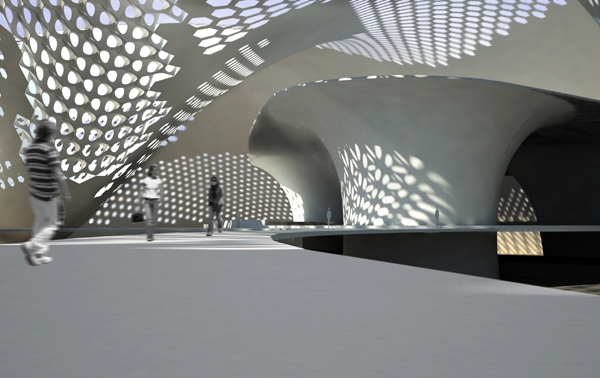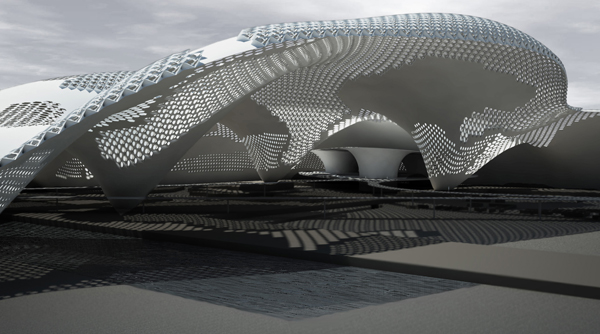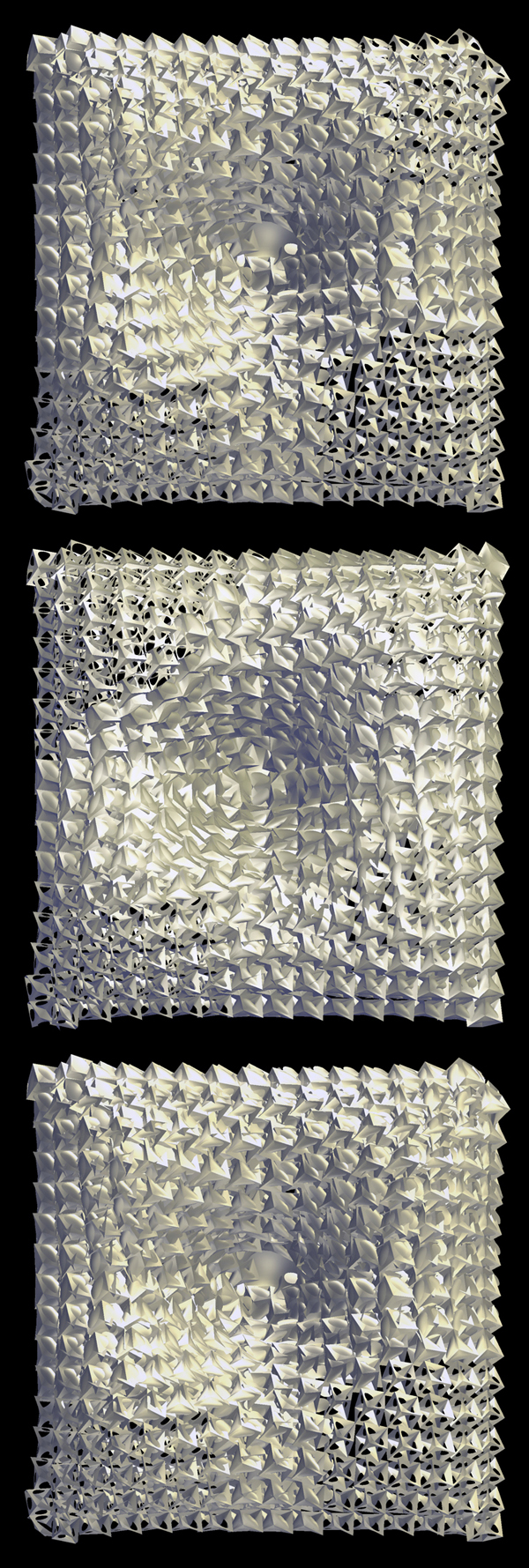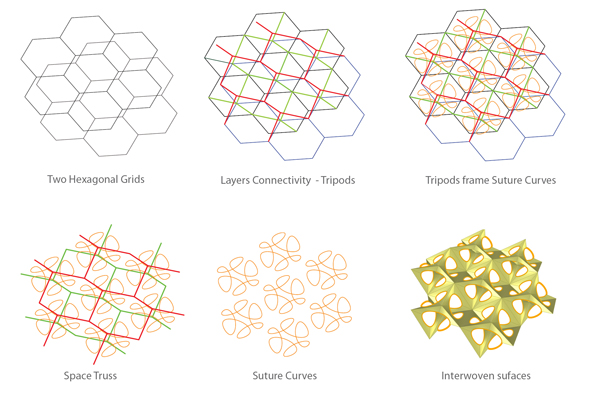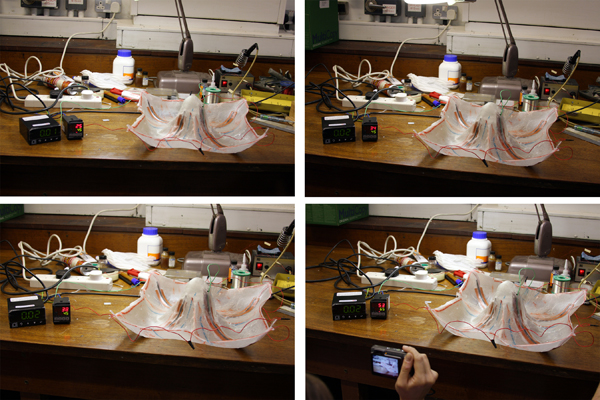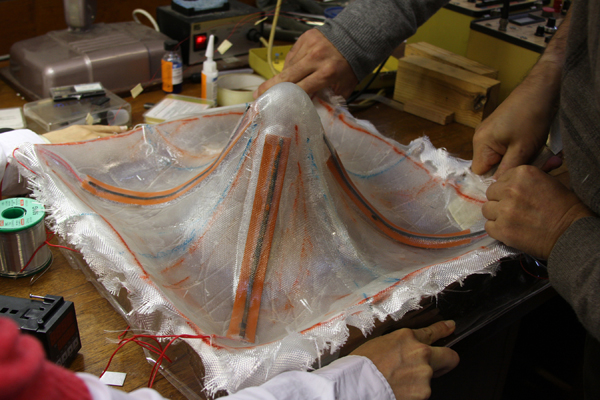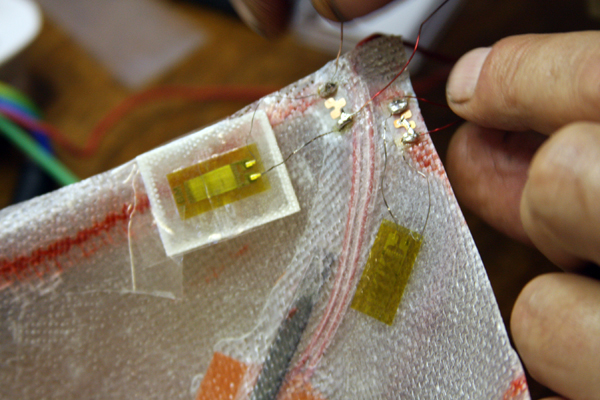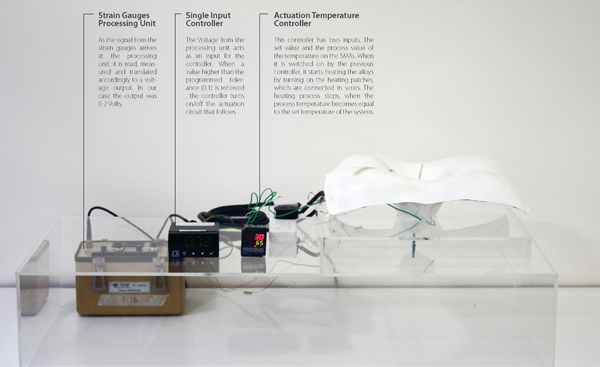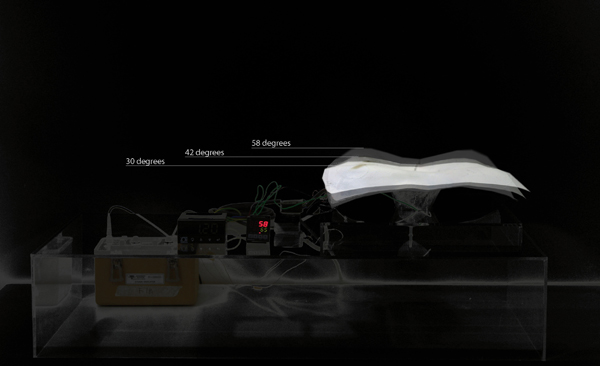Designed by Maria Mingallon, Sakthivel Ramaswamy, Konstantinos Karatzas
Fibre composite adaptive systems is a research project which emulates self-organisation processes in nature by developing a fibre composite that can sense, actuate and hence efficiently adapt to changing environmental conditions. Fibre composites which are anisotropic and heterogeneous offer the possibility for local variations in their material properties. Embedded fibre optics would be used to sense multiple parameters and shape memory alloys integrated in a fibre composite material for actuation. The definition of the geometry, both locally and globally would complement the adaptive functions and hence the system would display ’Integrated Functionality’.
‘Thigmo-morphogenesis’ refers to the changes in shape, structure and material properties of biological organisms that are produced in response to transient changes in environmental conditions. This property can be observed in the movement of sunflowers, bone structure and sea urchins. These are all growth movements or slow adaptations to changes in specific conditions that occur due to the nature of the material: fibre composite tissue. Natural organisms have advanced sensing devices and actuation strategies which are coherent morpho-mechanical systems with the ability to respond to environmental stimulus.
Architectural structures endeavour to be complex organisations exhibiting highly performative capabilities. They aspire to dynamically adapt to efficient configurations by responding to multiple factors such as the user, functional requirements and the environmental conditions. Existing architectural smart systems are aggregated actuating components assembled and externally controlled, whose process of change is essentially different from that of thigmo-morphogenesis. In a leaf, the veins account for its form, structural strength and nourishment, nevertheless they are an integral part of the sensing and the actuation function. This process of a coherent self-autonomous multi-functionality could be termed as ‘Integrated functionality’. Emulating such a Morpho-mechanical system with sensors, actuators, computational and control firmware embedded in a fibre composite skin was the core of the research presented herein.
Performative abilities and intelligence of the fibre composite adaptive system proposed, springs from the integrated logics of its material behaviour, fibre organisation, topology definition and the overall morpho-mechanical strategy. The basic composite consists of glass fibres and a polymer matrix. The sensing function is carried out through embedded fibre optics which can simultaneously sense multiple parameters such as strain, temperature and humidity. These parameters are sensed and processed as inputs through artificial neural networks. The environmental and user inputs, inform the topology to dynamically adapt to one of the most efficient configurations of the ‘multiple states of equilibrium’ it could render. The topology is defined as a multi-layered tessellation forming a continuous surface which could have differentiated structural characteristics, porosity, density, illumination, self-shading and so on. The actuation is carried out through shape memory alloy strips which could alter their shape by rearranging their micro-molecular organisation between their austenitic and martensitic states. The shape memory alloy strip is bi-stable, but a strategic proliferation of these strips through a rational geometry could render several permutation and combinations creating multiple states of equilibrium, thus enabling continuous dynamic adaptation of the structure.

